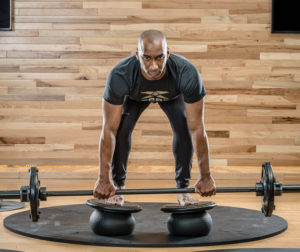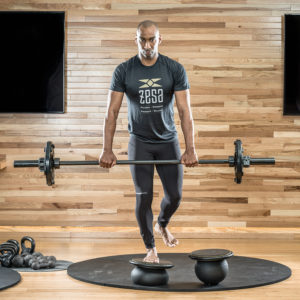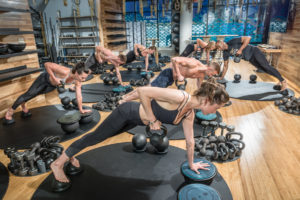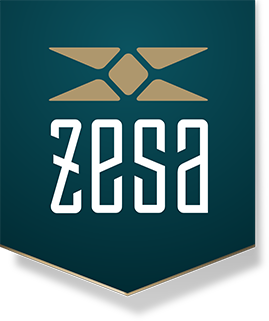1. ZeSa’s Dynamic Balance-Strength Training System™ is created for use either with double or single limbs.
2. Activators™, Stimulators™ and Accelerators™ come in sets of two and are the perfect size and design to use as bases of support for the hands, feet, or both.
Whether used in pairs or singly, the Dynamic Balance-Strength Training System™ is the ultimate Bilateral and Unilateral Balance Training tool. Unilateral training refers to weight-bearing movement involving one limb at a time, i.e. single-arm and single-leg exercises which have been proven to:
-
Isolate and Correct Muscle Imbalances [i] [ii]
-
Improve Balance via Mind-Muscle Connection [iii] [iv]
-
Increase Core Muscle Activation and Stabilization [v] [vi]
-
Aid in Injury Prevention and Rehabilitation [vii] [viii]
-
Boost Athletic Performance [ix]
-
Create a Neural Event such that when training one side, the muscles on the opposite side are also stimulated (cross education of muscles). Therefore brain pathways used for primary unilateral exercise also stimulate the similar muscles on the opposite side of the body. [x] [xi]




[i] https://www.physioqinesis.com/post/maximizing-potential-unilateral-training-runners
[ii] https://health.usnews.com/wellness/fitness/articles/2018-09-14/6-ways-to-use-unilateral-training-to-reach-your-fitness-goals
[iii] Behm DG, Colado JC, Colado JC. Instability resistance training across the exercise continuum. Sports Health. 2013 Nov;5(6):500-3. doi: 10.1177/1941738113477815. Erratum in: Sports Health. 2015 Mar/Apr;7(2):184. doi: 10.1177/1941738115569679. Colado Sanchez, Juan Carlos [corrected to Colado, Juan C]. PMID: 24427423; PMCID: PMC3806173.
[iv] Han, Y.M.Y., Chan, M.M.Y., Choi, C.X.T. et al. The neurobiological effects of mind–body exercise: a systematic review and meta-analysis of neuroimaging studies. Sci Rep 13, 10948 (2023). https://doi.org/10.1038/s41598-023-37309-4
[v] Magnus CR, Barss TS, Lanovaz JL, Farthing JP. Effects of cross-education on the muscle after a period of unilateral limb immobilization using a shoulder sling and swathe. J Appl Physiol (1985). 2010 Dec;109(6):1887-94. doi: 10.1152/japplphysiol.00597.2010. Epub 2010 Oct 21. PMID: 20966196.
[vi] https://health.usnews.com/wellness/fitness/articles/2018-09-14/6-ways-to-use-unilateral-training-to-reach-your-fitness-goals
[vii] Andrushko JW, Lanovaz JL, Björkman KM, Kontulainen SA, Farthing JP. Unilateral strength training leads to muscle-specific sparing effects during opposite homologous limb immobilization. J Appl Physiol (1985). 2018 Apr 1;124(4):866-876. doi: 10.1152/japplphysiol.00971.2017. Epub 2017 Dec 14. PMID: 29357520; PMCID: PMC5972467.
[viii] https://health.usnews.com/wellness/fitness/articles/2018-09-14/6-ways-to-use-unilateral-training-to-reach-your-fitness-goals
[ix]https://www.researchgate.net/publication/370480192_A_study_on_the_effect_of_unilateral_strength_training_intervention_on_lower_limb_asymmetry_in_college_basketball_players
[x] Aagaard P, Simonsen EB, Andersen JL, Magnusson P, and Dyhre-Poulsen P. Neural adaptation to resistance training: changes in evokedV-wave and H-reflex responses. J Appl Physiol 92: 2309 –2318, 2002.
[xi] Carroll, Timothy J., Robert D. Herbert, Joanne Munn, Michael Lee and Simon C. Gandevia. Contralateral effects of unilateral strength training: evidence and possible mechanisms. J Appl Physiol 101: 1514 –1522, 2006; doi:10.1152/japplphysiol.00531.2006.
